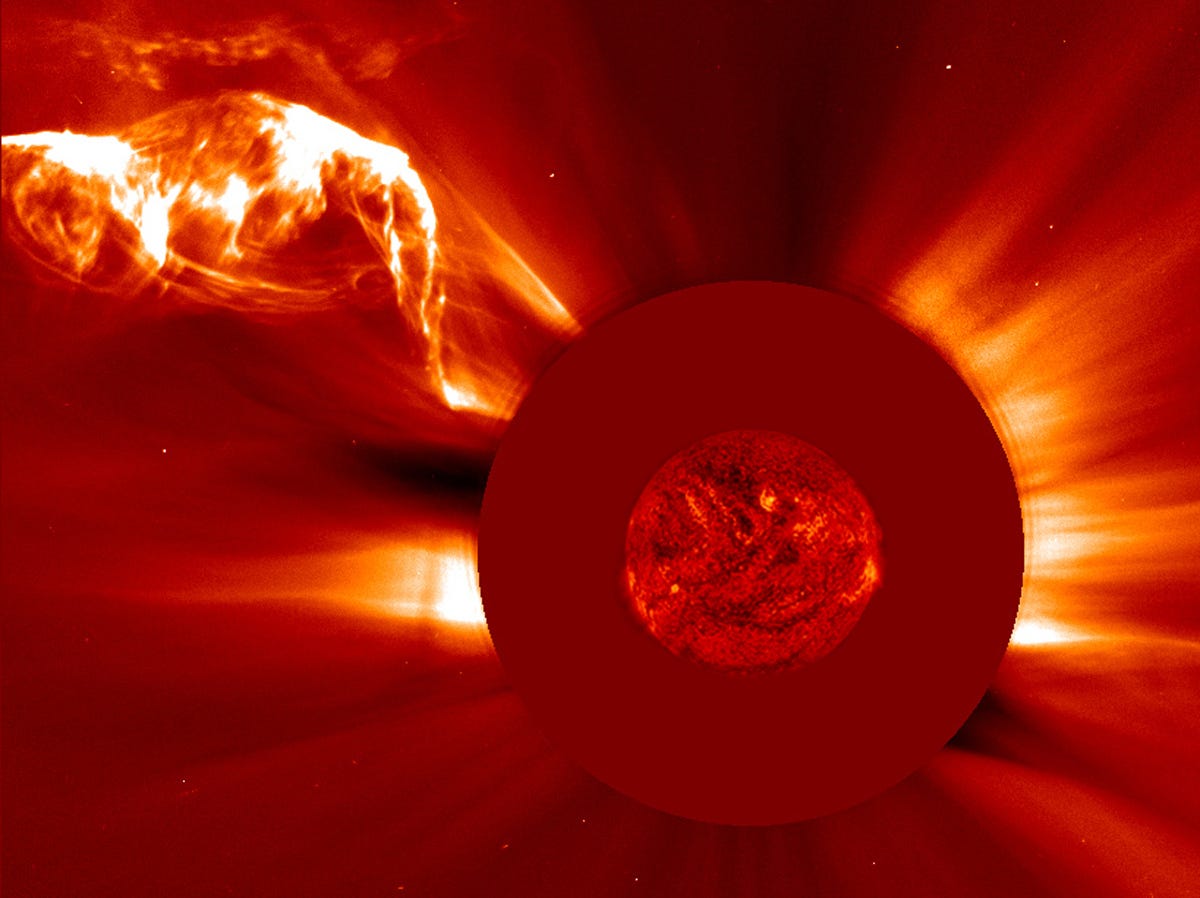Spectacular sun images heat up the heavens (pictures)
The sun a star with many moods broken by snaking filaments, raucous flares and dark spots.

Spitting out a filament
Our sun is an active star, and NASA has witnessed all sorts of exciting solar phenomena from filament eruptions to comets barely escaping the sun's fiery wrath.
The Solar and Heliospheric Observatory (SOHO) satellite captured this image of a massive solar filament spewing out into space in the spring of 2015. The satellite's imaging instrument blocks out some of the brightest parts of the star to see what's happening around it. SOHO is a joint project between NASA and the European Space Agency.
Sun as a jack-o'-lantern
NASA's Solar Dynamics Observatory caught this perfectly timed image in late 2014 of the sun sporting a face that looks like it was carved into a pumpkin. The eyes, nose and freaky smile are all visible thanks to activity on the sun's surface aligning perfectly for an early Halloween celebration.
Million-mile-long filament
The sun has sported some impressive filaments in its time, but this million-mile-long one spotted by NASA in late 2014 is a doozy. It's visible as a dark, wiggly line across the surface. The jagged formation is held up by magnetic forces and rotates along with the sun. Filaments sometimes result in the dramatic eruption of material out into space.
Earth and moon photobomb the sun
There's a lot happening in this image of the sun showing two dark bites out of its fiery globe. The Earth and the moon combined for a double "photobomb" while NASA's Solar Dynamics Observatory was viewing the sun. It occurred on September 13 during a partial solar eclipse.
"Though SDO sees dozens of Earth eclipses and several lunar transits each year, this is the first time ever that the two have coincided," NASA notes.
A very long filament
The dark squiggly line across the top of the sun is a very long filament spotted by NASA's Solar Dynamics Observatory earlier in October. Magnetic forces hold the solar material in place. The formations are unstable and many don't last a week. This particular filament is as long as 50 Earths set side by side.
The sun gets trippy
NASA's Nuclear Spectroscopic Telescope Array (NuSTAR) made this psychedelic-looking image of the sun possible. NuSTAR is a space telescope that was launched in 2012 to study the X-ray output of distance objects in the universe. The colorful sun image is a composite using data from NuSTAR, Japan's Hinode spacecraft and NASA'S Solar Dynamics Observatory.
Comet survives a ride around the sun
The red arrow points to a daredevil comet that narrowly survived a harrowing journey around the sun. The Solar Heliospheric Observatory (SOHO) spacecraft traced
the comet's path earlier this year. The comet seen here is the 2,875th one spotted by SOHO. It came within 2.2 million miles of the star. Other comets have been known to burn up in the sun's extreme heat.
Space station transits the sun
Those small black spots near the center of the sun trace the shadowy profile of the International Space Station as it transits the sun. Senior NASA photographer Bill Ingalls took the impressive images used in the composite shot in September 2015. He saw this from a vantage point of a national park in Virginia in the US. Nine astronauts were on-board the station at the time.
Massive hole on the sun
This huge coronal hole was seen on the sun by NASA's Solar Dynamics Observatory earlier this month. The dark spot is actually a colder region that appears black in X-ray and extreme ultraviolet images. Holes like this can last for months, changing shape during their lifespans. This one impresses for its sheer size.
Sunspot visible from Earth
A partial solar eclipse on October 23 made an interesting phenomenon visible to eagle-eyed viewers. A massive sunspot could be seen from Earth by people with proper eye protection during the eclipse. The sunspot was the biggest in 24 years. It let off a series of solar flares, but no mass ejections of material out into space. At its peak, it measured 80,000 miles (about 128,748 kilometers) across.

